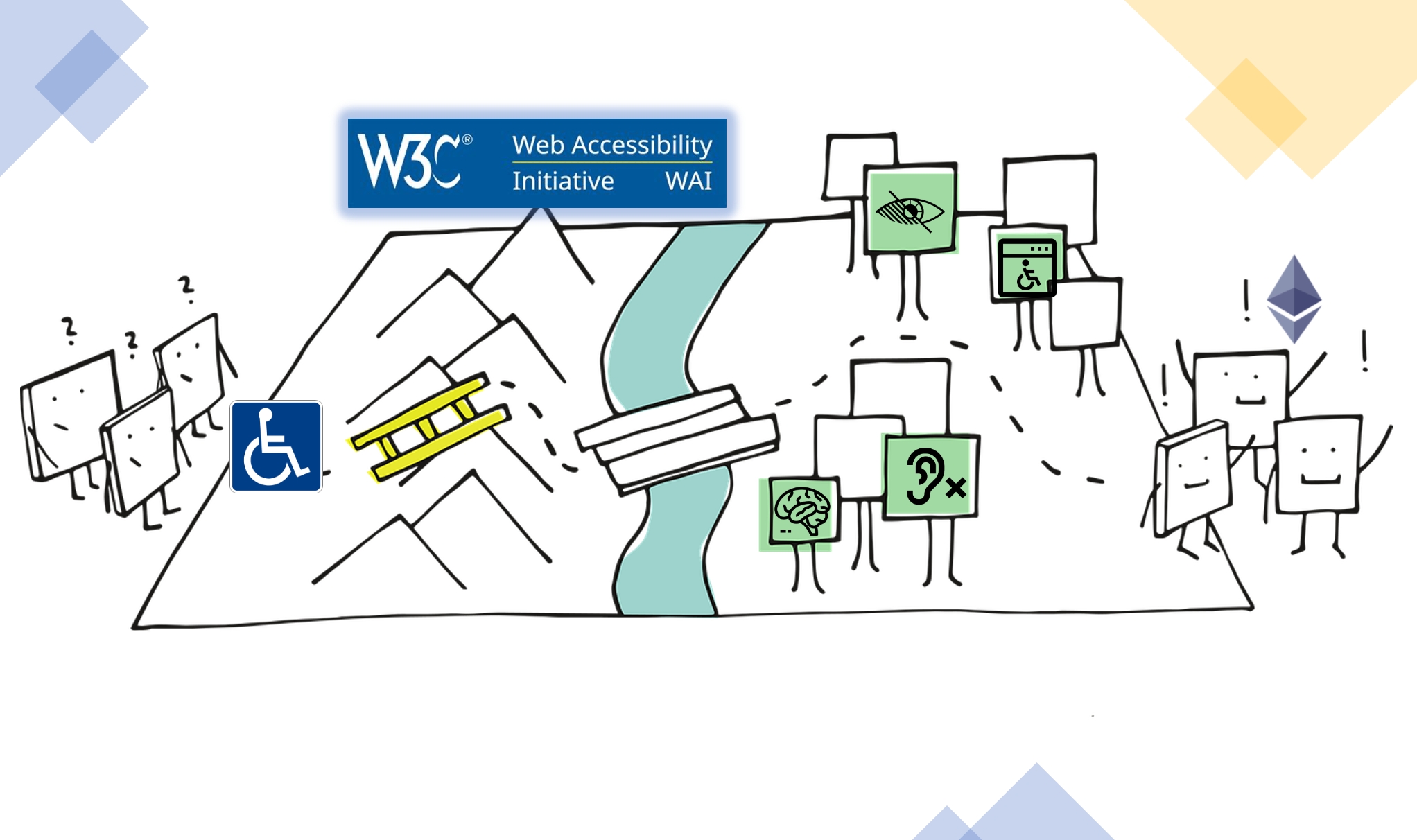Introduction
Primer for Accessibility

The purpose of this set of references and guidelines is not to reinvent the wheel. Accessibility Guidelines have existed through WAI-ARIA and WCAG and are to be the main reference source for official recommendations. However, there are specific better practices pertinent in different areas, especially in emerging technologies such as blockchain.
This Reference guide is rooted in understanding best practices and applying their guidance as it befits decentralized applications.
Accessibility is more than code and applications. It is about taking into consideration individuals who may be excluded. Everyone has a part to play in ensuring that individuals are able to equally participate. This is a duty for every role across all organizations.
Our hope is that others contribute to this growing work and overtime anyone can reference and benefit from collective experiences. Let's shape this next era of the internet in a better way. Let's be more accessible, inclusive, and usable. It benefits everyone. Let us not port existing problems into the next generation of technology.
a11y ?

The term "a11y" is a clever abbreviation of the word "accessibility". Developers and teams in the accessibility often raise PRs in repositories with a11y included in the title to clarify that the underlying change or issue raised is related to accessibility. Such PRs do exist, in small quantities, at the moment in the blockchain space.
We recommend using this short hand for raising or amending issues as it becomes easier to search for these specific PRs in different repositories.
Dynamic Reference

This guide should always be considered to be a dynamic, not stagnant reference.
There may be amendments, removals, or additions over the course of time through our group or through other contributors.
As such it would be good to periodically revisit this documentation.
Message For Teams Working on Accessibility
Progress Daily. Develop and foster a greater sense of compassion. Learn how to make your code and contributions accessible. It will make a huge difference in the long run.
It is more important to establish stronger foundations in your codebase. The earlier you start the better.
Don't view accessibility as ticking off boxes on a checklist, but rather as a process that is as dynamic and ever evolving as the codebase itself.
It is ok to make mistakes, we're all human. What's more important is to document everything and be adaptable. Promote learning, growth, and kindness. Even our guide may be imperfect, especially at inception as we all navigate and adapt to the pace of innovation.

Credits and Redistribution
Kindly help spread the word of this guide so that others are aware for contribution and knowledge sharing purposes.
Kindly credit this work appropriately if it is shared or reused. This circles back to the first point in aiding in spreading the word. Furthermore, a lot of hard work has gone into this and it's only fair to give credit where credit is due.
Learning Resources
Below is a snapshot of early learning resources for beginners. We will include these as well in our master resource list, which will feature many more resources.
Be sure to checkout the dapp-clones repository for working examples of dapps following best accessiblity practices.
Initial Readings
Initial Videos
Legal Disclaimer
The intention of this guide is to aid others in their accessibility learning journey and to provide an evolving reference for designers and builders. Always consult legal and financial professionals for regulatory and compliance factors. Following WCAG rooted standards is the best way to ensure proper accessibility, however users must still be involved in testing.
We include some links to legal and compliance based references, however no part of this guide constitutes legal and/or financial advice. Always do your own research! (DYOR)
Last updated